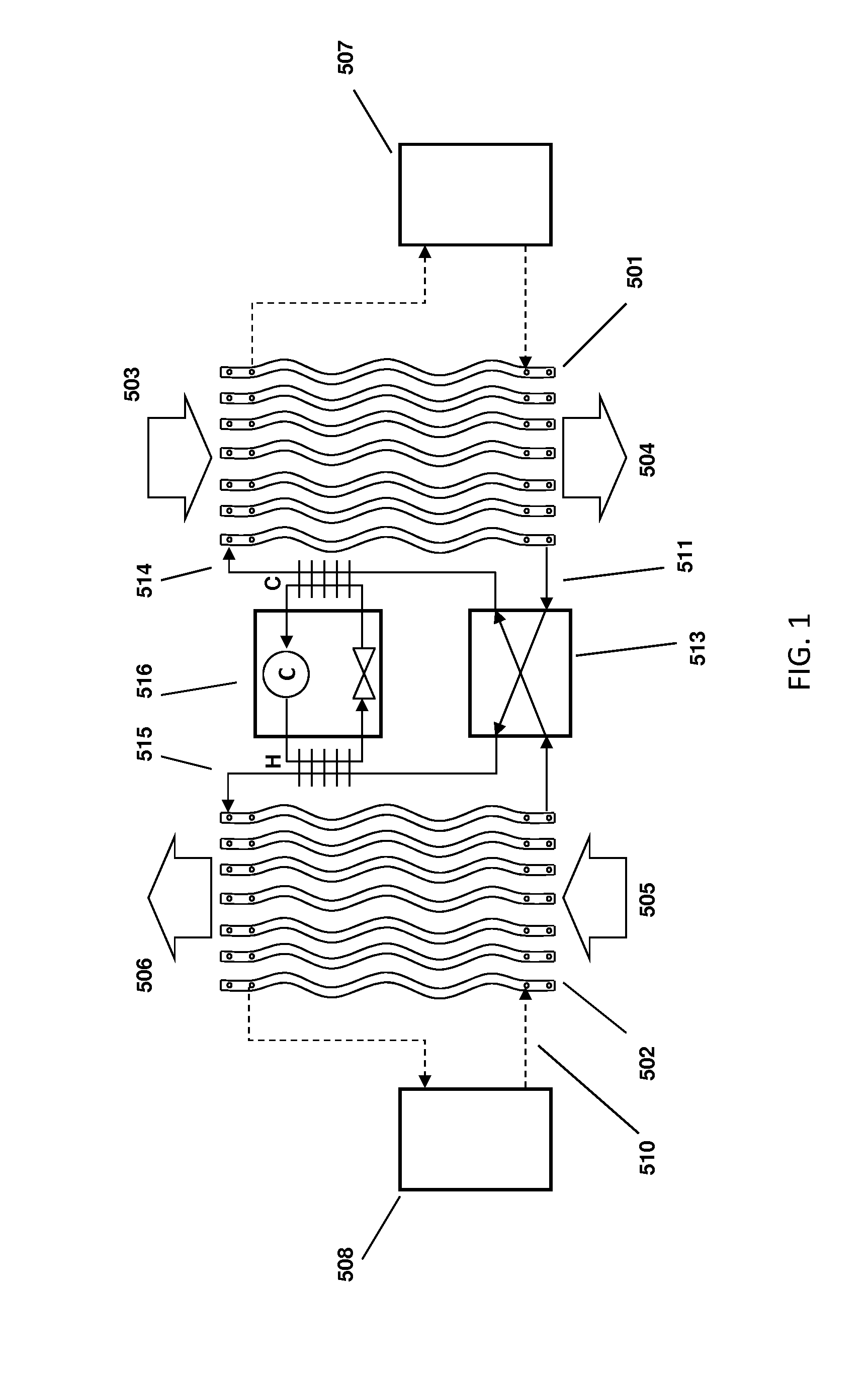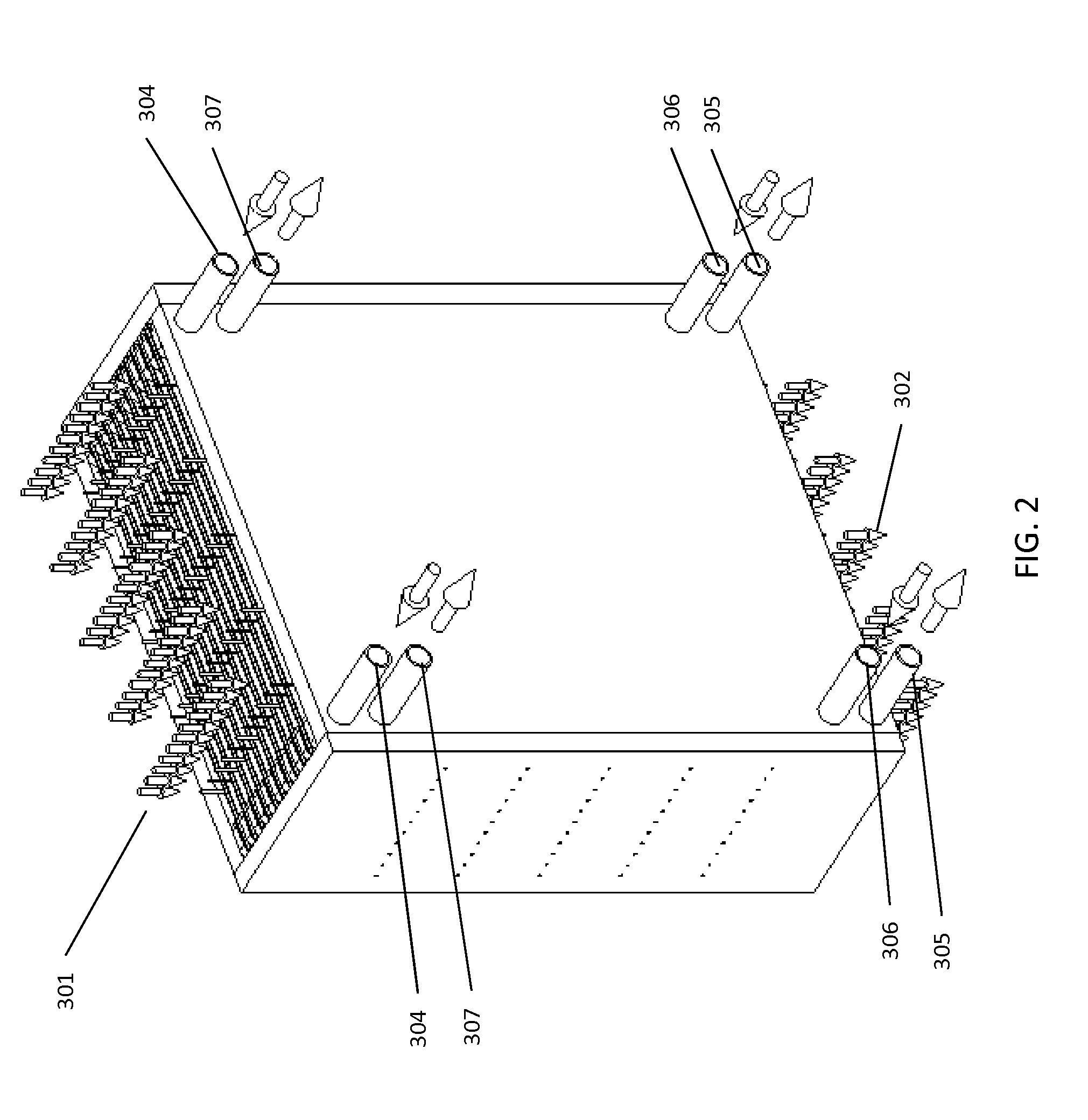Methods and systems for cooling buildings with large heat loads using desiccant chillers
a technology of desiccant chiller and building heat, which is applied in the direction of domestic cooling apparatus, heating types, separation processes, etc., can solve the problems of reducing the cooling water temperature, requiring a cooling tower to be oversized or other means of heat rejection, and the liquid desiccant system is not very common in datacenters, so as to increase the cooling efficiency of the cooling tower
- Summary
- Abstract
- Description
- Claims
- Application Information
AI Technical Summary
Benefits of technology
Problems solved by technology
Method used
Image
Examples
Embodiment Construction
[0020]FIG. 1 depicts a new type of liquid desiccant system as described in further detail in U.S. patent application Ser. No. 13 / 115,736, filed on May 25, 2011, which is incorporated by reference herein. A conditioner 501 comprises a set of plate structures that are internally hollow. A cold heat transfer fluid is generated in cold source 507 and entered into the plates. Liquid desiccant solution at 514 is brought onto the outer surface of the plates and runs down the outer surface of each of the plates. The liquid desiccant runs behind a thin membrane that is located between the air flow and the surface of the plates. Outside air 503 is now blown through the set of wavy plates. The liquid desiccant on the surface of the plates attracts the water vapor in the air flow and the cooling water inside the plates helps to inhibit the air temperature from rising. The treated air 504 is put into a building space.
[0021]The liquid desiccant is collected at the bottom of the wavy plates at 511...
PUM
 Login to View More
Login to View More Abstract
Description
Claims
Application Information
 Login to View More
Login to View More - R&D
- Intellectual Property
- Life Sciences
- Materials
- Tech Scout
- Unparalleled Data Quality
- Higher Quality Content
- 60% Fewer Hallucinations
Browse by: Latest US Patents, China's latest patents, Technical Efficacy Thesaurus, Application Domain, Technology Topic, Popular Technical Reports.
© 2025 PatSnap. All rights reserved.Legal|Privacy policy|Modern Slavery Act Transparency Statement|Sitemap|About US| Contact US: help@patsnap.com



